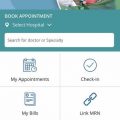Thinking outside the box is necessary to improve patient outcomes in healthcare, and it entails taking the patient’s needs into account on a larger scale. Not only can the general public benefit from better patient outcomes, but so can a hospital’s or practice’s bottom line.

Importance of Patient Outcomes
For healthcare professionals to assess and examine patients’ experiences in their clinics or hospitals, it is crucial to use patient outcomes. It enables the patient’s viewpoint to be heard, allowing future consideration of their goals to enhance their physical and mental welfare.
Knowing how patients feel requires the use of patient-reported outcomes (PROs).
Patient-reported effects can be used to assess and update a variety of factors, including:
- Treatment plans can be modified to provide individuals with what they want and need
- It is possible to get specifics about the effects of various medicines and treatments on patients
- What people say about their own experiences can lead to the development of new medicines
How Can You Achieve Better Patient Outcomes in Healthcare?
1. Improved Patient Intake
Every effective treatment strategy must begin with the correct diagnosis. The first few minutes of a patient’s engagement with a medical professional can impact the treatment plan’s price and outcome.
Patients and providers can be better prepared for a smooth and successful session with a rapid and reliable procedure. Eliminating cognitive and diagnostic errors, which could prevent patients from obtaining the proper care, must be a priority for health systems.
2. Reduce Medical Errors
According to the World Health Organization (WHO), one of the top 10 causes of death is unfavorable health outcomes brought on by subpar medical care. Infections, misdiagnosed illnesses, and medication errors are a few of the problems that can endanger patient safety.
Medical errors can be reduced by:
- Observing standard safety procedures
- Coordinating actions between pharmacists and healthcare professionals
- Identifying health issues as accurately and promptly as possible
- Taking up healthcare compliance training
3. Increasing Transparency
Patients may find accessing care providers and medical records more straightforward, thanks to telehealth choices and electronic technologies. People can more easily navigate the healthcare system and obtain the care they require when they can utilize computers or cell phones to access information, contact their healthcare team, or gain facts and information.
4. Adopt Patient Safety Procedures
Hospitals are required to guarantee that patient safety procedures are always followed. It entails regularly checking vital signs, upholding appropriate infection control policies, and following best practices for medication administration. Furthermore, ensuring adequate personnel levels and carrying out frequent safety audits can assist in lowering the significant risk of errors and enhancing patient outcomes.
5. Utilize Technology
The healthcare sector is changing quickly, and technology is becoming crucial to enhancing patient outcomes. Health information systems allow providers to securely exchange data, giving them access to real-time patient data to improve their care.
The use of telemedicine, which enables patients to speak with their doctor remotely and get guidance on health issues without having to make an in-person visit, has also grown in popularity in recent years. The quality of life for patients with chronic illnesses can be improved by using technology to monitor vital signs at home and lower the chance of readmission to the hospital.
Challenges with Patients in Healthcare
1. Limited Availability
Many healthcare organizations provide a standard set of business hours for patient visits. However, a clinic between 8 am and 6 pm may not always help work adults or parents, and patients require flexible office hours to visit the doctor outside of work or class.
2. Geographical Limitations
Patients in rural areas are disproportionately more likely than those in urban or suburban areas to experience access issues with their providers.
3. Transportation Barriers
Despite having access to a physician and making an appointment, people may be unable to see their doctors due to transportation issues. Patients who cannot get to the doctor’s office because they are physically unable to drive, pay for transportation, or for any other reason frequently receive no care.
Final Thoughts
Although patient-centered care was developed to improve patients’ wellness, it has also been beneficial for medical specialists. The maintenance of patient populations who may have previously been thought to be difficult to treat will be improved by embracing a more humanistic approach of interacting, listening with an open mind, accepting patients’ viewpoints, and engaging every patient’s family. The satisfaction of your primary care team will also be improved when better patient outcomes are achieved.






